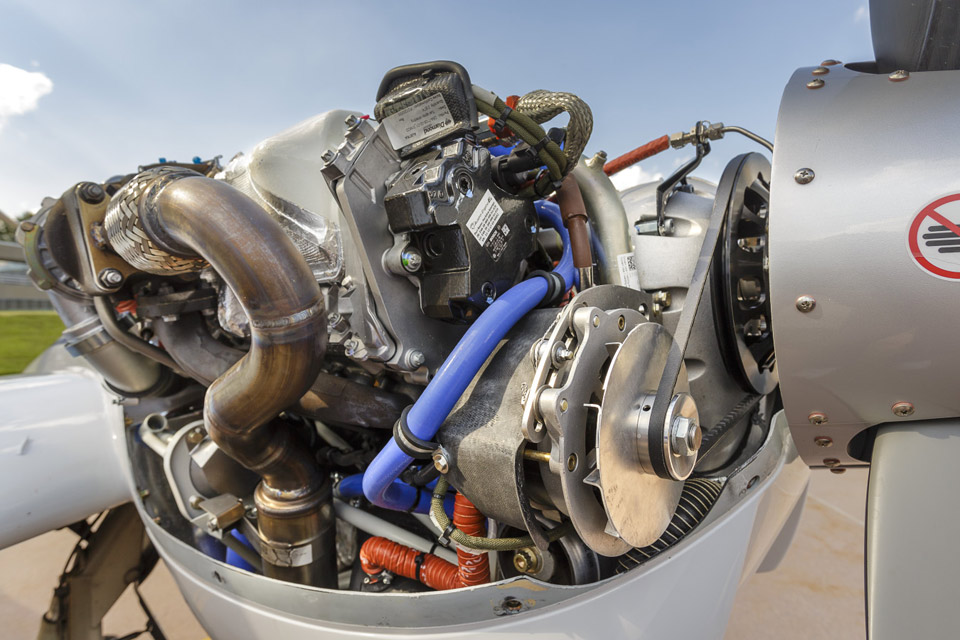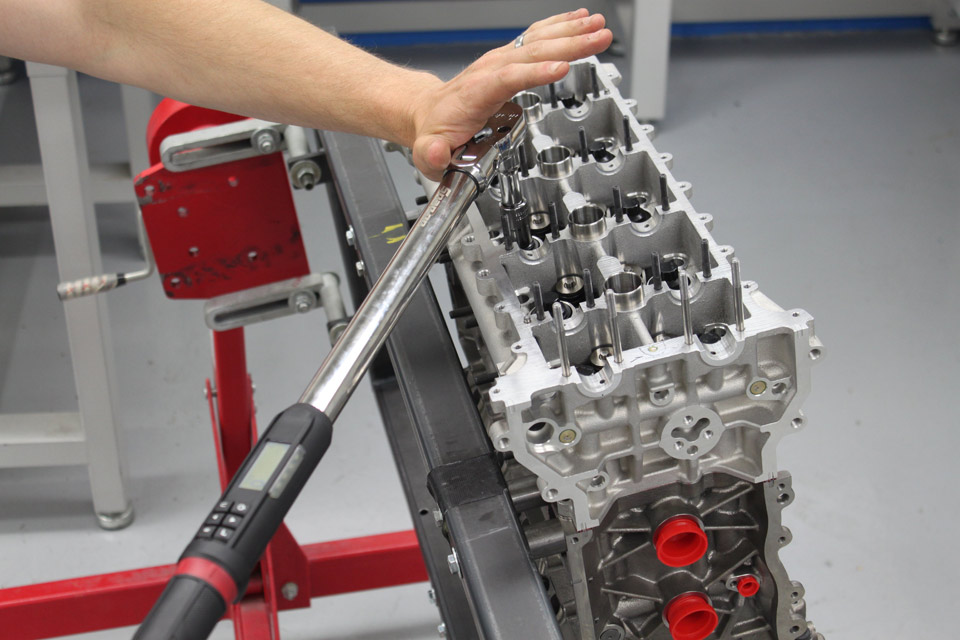Diesel rounds the bend
New funds spur nextgen diesel engines
 With their ability to burn widely available and lower-cost Jet fuel, rugged durability, single-lever power control, and generally better fuel specifics, the allure of diesel engines for aviation is high. Still, the progress and acceptance are slow, particularly in the United States where avgas flows freely at prices competitive with jet fuel. The surge of new diesel engine installations predicted by many aviation observers has yet to materialize. However, that doesn’t mean that progress is not real. In fact, the development field is becoming more crowded as long-languishing projects earn fresh funding and support.
With their ability to burn widely available and lower-cost Jet fuel, rugged durability, single-lever power control, and generally better fuel specifics, the allure of diesel engines for aviation is high. Still, the progress and acceptance are slow, particularly in the United States where avgas flows freely at prices competitive with jet fuel. The surge of new diesel engine installations predicted by many aviation observers has yet to materialize. However, that doesn’t mean that progress is not real. In fact, the development field is becoming more crowded as long-languishing projects earn fresh funding and support.
Among those racing forward are the Gemini engine from Superior Aviation, DeltaHawk, and EPS. Gemini is a new name for a British project started by Powerplant Developments, which at one point was overseen by Tim Archer. When Archer recently returned to Superior Aviation, a company he had run in the 1990s, he bought the Powerplant Developments project, gave it a new name, and a kickstart of funding to get it moving again. Announced at Sun ’n Fun in April 2015, a mockup of the three-cylinder, horizontally opposed 100-horsepower engine showed up at EAA AirVenture this summer on an American Legend Cub Light Sport aircraft.
The Ruud family recently bought a controlling interesting in the DeltaHawk diesel engine project, providing what company representative Dennis Webb says is enough funding to put the four-cylinder, 180-horsepower engine through certification and into production in 2016. The project launched more than 15 years ago.
EPS—Engineered Propulsion Systems—has closed three rounds of financing with a fourth pledged. The eight-cylinder, 4.3-liter, 350-horsepower engine needs $32 million to get into production, according to Michael Fuchs, president and CEO. He has spent $22 million so far, with an engine flying on a Cirrus SR22 to show for it. At nine years old, EPS is a relative newcomer to the aviation diesel market.
The newly flush-with-cash projects join certified engines from Continental, SMA, and Austro as the primary players in the general aviation market. Lycoming delivers diesel engines to the drone market, but so far no airframe manufacturer has stepped up to put it on a GA airplane, according to General Manager Michael Kraft.
The Continental, Austro, and Lycoming engines have a strong lineage from automotive powerplants while the SMA Safran engine is a clean-sheet airplane engine, as are those from Superior, DeltaHawk, and EPS.
The road to acceptance for the already certified engines has been torturous. The Continental engines are upgraded versions of the Thielert powerplants developed in the late 1990s. But the company ran into financial and reliability problems in the mid-2000s before morphing into Centurion engines and ultimately being acquired by Continental. Among the Thielert customers was Diamond Aircraft. When it could no longer get Thielert engines, it developed its own Austro line of engines. However, Diamond itself has been mostly dormant in the North American aviation market for several years as it concentrated on markets where diesels are more necessary. Look for it to return to the North American market in a big way in coming months.
SMA, meanwhile, began as a partnership between Renault and Socata. After many years of fits and starts the engine was certified in Europe and flies on hundreds of airplanes there. Cessna elected to put it on the 182, dubbed the JT-A, but to put it through a full FAA certification process rather than a reciprocal agreement from the Europeans. After years of development and certification delays, Cessna this year put the project on hold and began once again building avgas-powered Skylanes.
Given the tumultuous arena, it’s a wonder anyone would want to invest in the aviation diesel space, but it is happening—and with innovative projects.
The Gemini is unusual in that it is a two-stroke engine that contains two pistons in each of its three cylinders. The two opposing pistons drive two crankshafts with the combustion chamber between the two piston heads. The result is far fewer moving parts than a conventional engine. With its supercharger and installed weight of just less than 200 pounds, the 100-horsepower engine is expected to burn 20 percent less fuel than a comparable Lycoming or Continental avgas engine while occupying about the same amount of space as a Rotax 912, according to American Legend’s Darin Hart. Superior officials expect to have engines for LSAs available in 2016 at a price of about $25,000 and 200-horsepower certified solutions in 2017 with subsequent models reaching up to 550 horsepower.
Like most of the aviation diesel engines, the Gemini engine requires a gearbox to slow the engine rotation to a level that is suitable for a propeller. However, the new DeltaHawk does not, resulting in significant weight savings, reduction in complexity, and potentially improving reliability and yielding higher times between overhauls.
DeltaHawk has been flying its engine on a Velocity and a Cirrus SR20, with installation kits in development for numerous models including Van’s RV–7, Glasair, and Zenith Experimental airplanes; STCs are in planning for various certified aircraft, as well. Customer projects have included helicopters and various UAVs. Like the Gemini, the DeltaHawk is a two-stroke design that contains about a third of the parts of competitive engines while producing 160 to 200 horsepower, according to spokesman Dennis Webb. However, the DeltaHawk is direct drive—so no gearbox—and it uses a ported piston design and, thus, has no valves or camshafts. Instead, combustion air is drawn into the piston via ports in the cylinder walls as the piston moves down. The downward movement also exposes exhaust ports. The incoming air, pressurized by the supercharger and turbocharger, forces the exhaust out. As the piston moves back up the intake ports are covered, and the air is compressed as the fuel injector forces fuel in for the compression ignition. Although it is a V4, it has the same combustion cycles as V8. Because of the porting, the engine can’t be overboosted, eliminating the need for a wastegate. The engine-driven supercharger and exhaust-driven turbocharger back up each other; the engine will run on either. The V4 design can be installed with the V pointed up or down, depending on cowling shape. By changing just a few parts, it can be counter-rotating on a twin, according to Webb.
The oil and coolant pumps are externally mounted for easy maintenance. The engine is liquid cooled, but in the case of a coolant leak, the pilot can reduce power to 50 percent and fly indefinitely without causing any damage, Webb said. The engine utilizes a single-lever power control, but is purely mechanically controlled. It requires no electricity to operate.
Webb predicts the engine will be priced competitively with turbocharged avgas engines and less expensive than most diesel offerings.
Similarly, EPS leverages its clean-sheet design to create an engine that contains fewer parts than those derived from automotive designs. Fuchs and his partner Steven Weinzierl have developed more than 20 engines from single cylinder through 16 cylinders for companies such as Ford, Buggati, and Volkswagen. When they began designing an aviation engine they started at the upper end of the GA market because of the higher- potential margins from the higher-value airframes. The eight-cylinder engine will put out approximately 350 horsepower burning diesel, jet, or kerosene, according to Fuchs. He expects their Graflight V-8 engine will have a 3,000-hour TBO. He says the engine will burn 30 to 50 percent less fuel than a comparable avgas engine while offering reduced workload through a single-lever power control.
While the EPS engine doesn’t use automotive parts, it does draw from technologies perfected in high-volume truck and auto engines, such as a compacted graphite iron (CGI) cylinder block, which reduces weight and increases strength. Steel pistons, instead of aluminum traditionally used in aviation, allow for greater strength, shorter pistons, less weight, and less wear because the steel and CGI have almost the same thermal expansion properties.
Fuchs says his Graflight V-8 engine will weigh 30 to 50 pounds more than a comparable Lycoming or Continental engine, but with better fuel economy it will require less fuel, resulting in more versatility for the pilot.
At AirVenture 2014, EPS showed off a Cirrus SR22 powered by a Graflight V-8.
He believes he is one-third of the way through a 36-month certification process, with certification expected in the second quarter of 2017 and deliveries shortly thereafter. What will it cost? About 30 percent more than a similar avgas engine, but with lower fuel burn and higher TBO, he expects it will be less expensive to own and operate over time.
Email [email protected]








